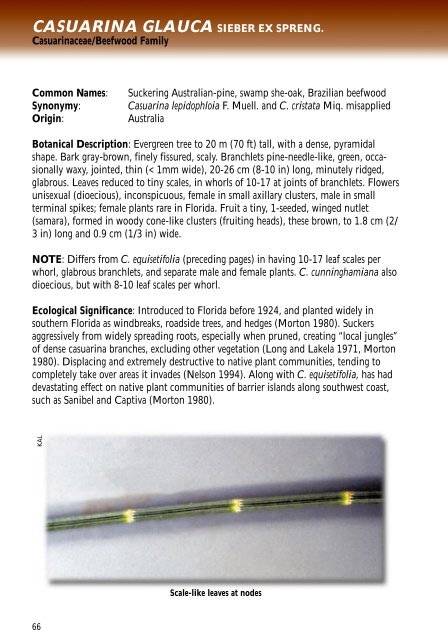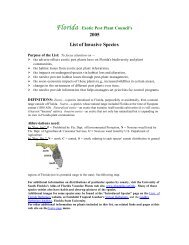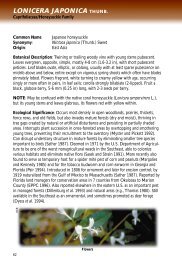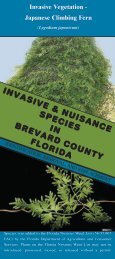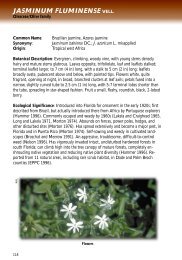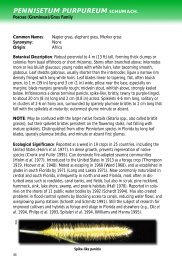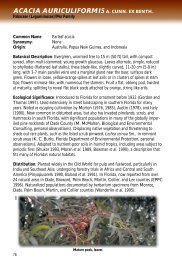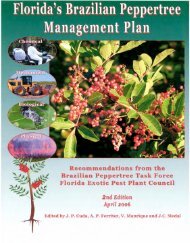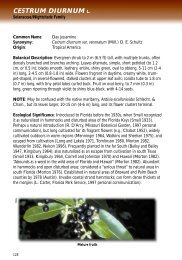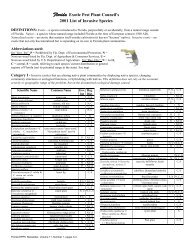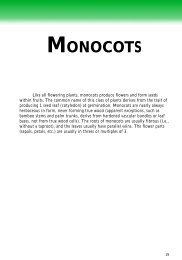DICOTS - Florida Exotic Pest Plant Council
DICOTS - Florida Exotic Pest Plant Council
DICOTS - Florida Exotic Pest Plant Council
You also want an ePaper? Increase the reach of your titles
YUMPU automatically turns print PDFs into web optimized ePapers that Google loves.
Casuarina glauca Sieber ex Spreng.<br />
Casuarinaceae/Beefwood Family<br />
Common Names: Suckering Australian-pine, swamp she-oak, Brazilian beefwood<br />
Synonymy: Casuarina lepidophloia F. Muell. and C. cristata Miq. misapplied<br />
Origin: Australia<br />
Botanical Description: Evergreen tree to 20 m (70 ft) tall, with a dense, pyramidal<br />
shape. Bark gray-brown, finely fissured, scaly. Branchlets pine-needle-like, green, occasionally<br />
waxy, jointed, thin (< 1mm wide), 20-26 cm (8-10 in) long, minutely ridged,<br />
glabrous. Leaves reduced to tiny scales, in whorls of 10-17 at joints of branchlets. Flowers<br />
unisexual (dioecious), inconspicuous, female in small axillary clusters, male in small<br />
terminal spikes; female plants rare in <strong>Florida</strong>. Fruit a tiny, 1-seeded, winged nutlet<br />
(samara), formed in woody cone-like clusters (fruiting heads), these brown, to 1.8 cm (2/<br />
3 in) long and 0.9 cm (1/3 in) wide.<br />
NOTE: Differs from C. equisetifolia (preceding pages) in having 10-17 leaf scales per<br />
whorl, glabrous branchlets, and separate male and female plants. C. cunninghamiana also<br />
dioecious, but with 8-10 leaf scales per whorl.<br />
Ecological Significance: Introduced to <strong>Florida</strong> before 1924, and planted widely in<br />
southern <strong>Florida</strong> as windbreaks, roadside trees, and hedges (Morton 1980). Suckers<br />
aggressively from widely spreading roots, especially when pruned, creating “local jungles”<br />
of dense casuarina branches, excluding other vegetation (Long and Lakela 1971, Morton<br />
1980). Displacing and extremely destructive to native plant communities, tending to<br />
completely take over areas it invades (Nelson 1994). Along with C. equisetifolia, has had<br />
devastating effect on native plant communities of barrier islands along southwest coast,<br />
such as Sanibel and Captiva (Morton 1980).<br />
KAL<br />
66<br />
Scale-like leaves at nodes


